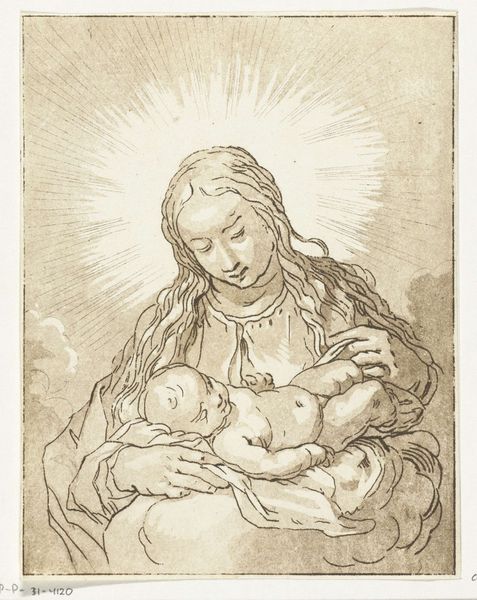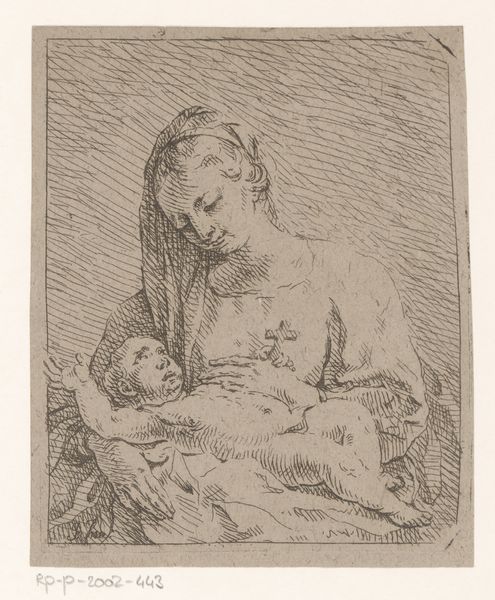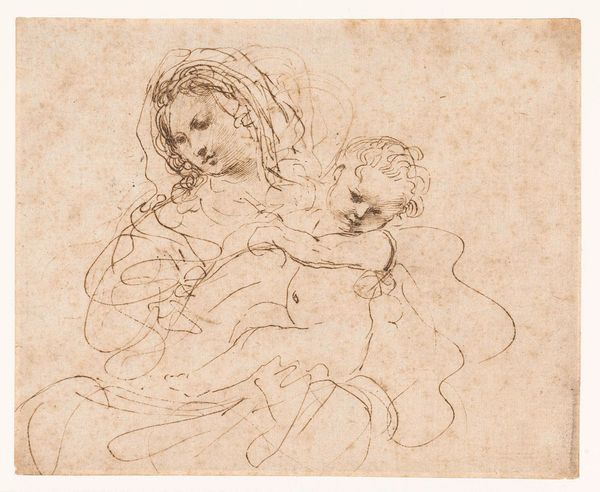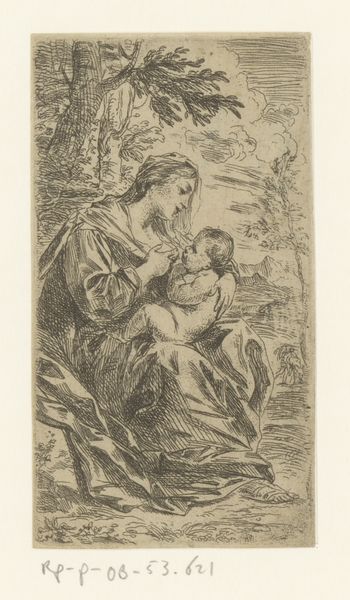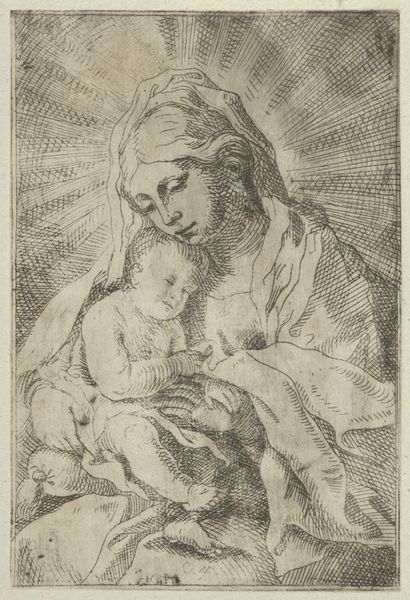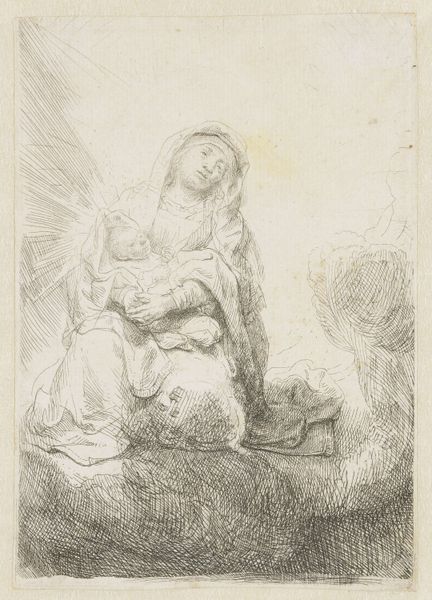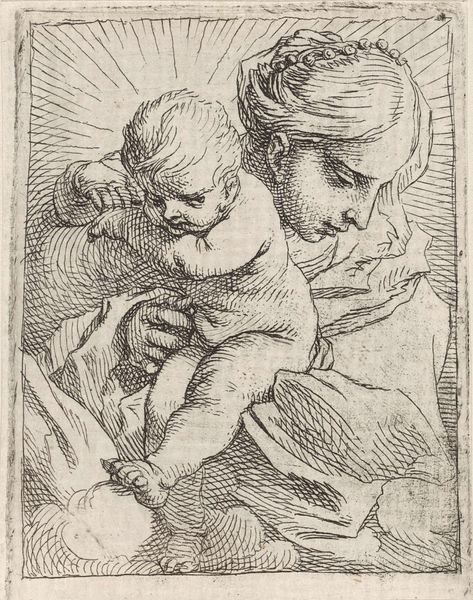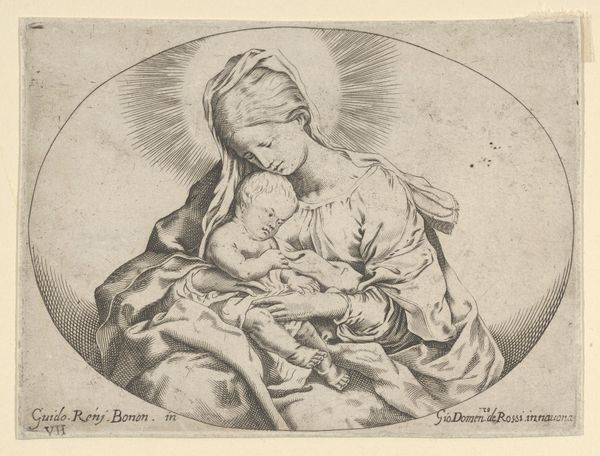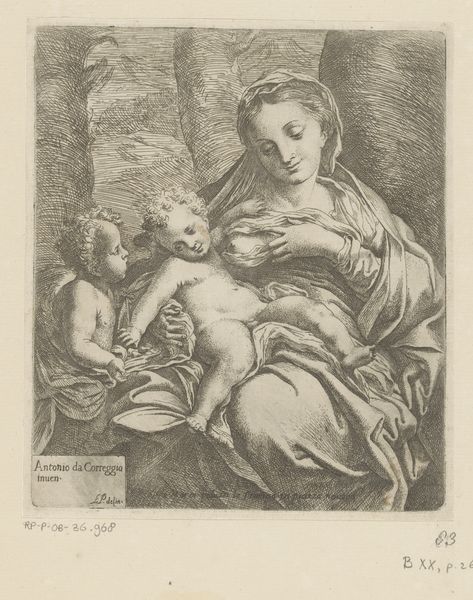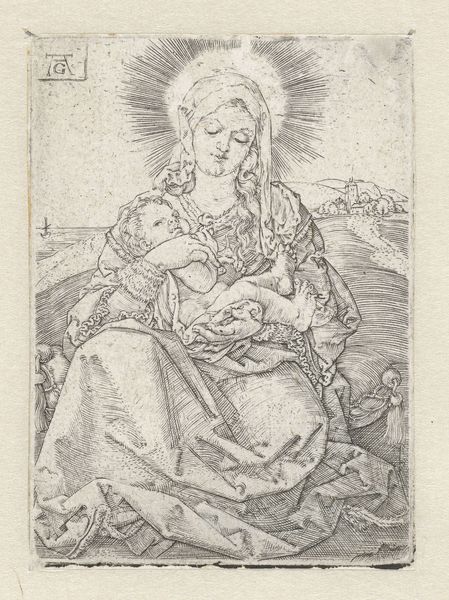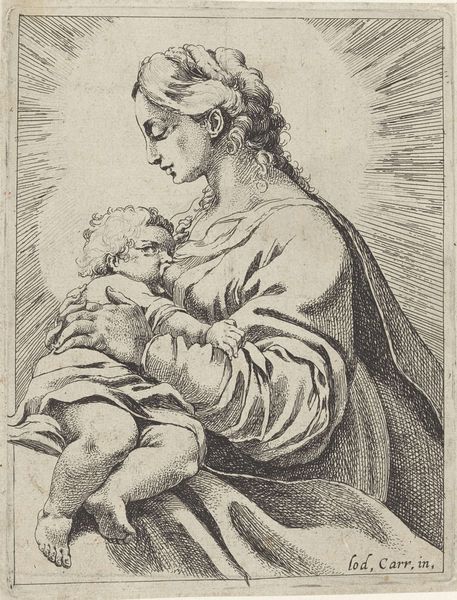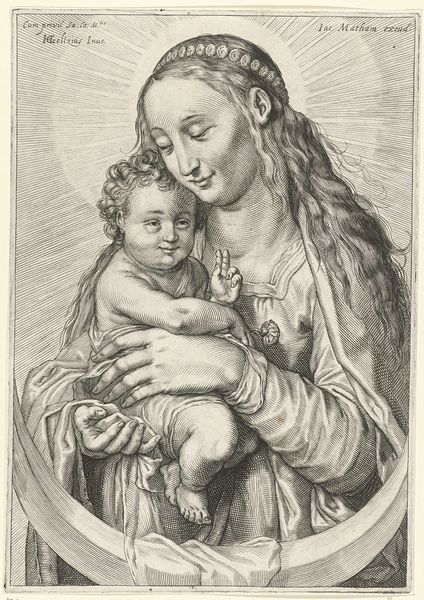
drawing, print, etching, paper, ink
#
portrait
#
drawing
# print
#
pen illustration
#
etching
#
figuration
#
paper
#
11_renaissance
#
ink
#
line
#
history-painting
Dimensions: height 150 mm, width 120 mm
Copyright: Rijks Museum: Open Domain
Anthonie van den Bos created this etching, Maria met kind, using metal plate and etching techniques. The process begins with a metal plate, likely copper, coated with a waxy, acid-resistant substance. The artist then scratches through this ground with a needle, exposing the metal. When the plate is immersed in acid, the exposed lines are etched, creating grooves. Ink is then applied to the plate, filling these grooves, and the surface is wiped clean. Finally, the plate is pressed onto paper, transferring the ink and creating the image. The fineness of the lines speaks to Van den Bos’s skill in manipulating the etching needle and controlling the acid bath. The relatively small scale of the print also allowed for detailed work, intended for close inspection. Etchings like this allowed for the wider distribution of religious imagery at a relatively low cost, making art accessible to a broader audience. The inherent qualities of the etching process, such as the precision of line and tonal range, were perfectly suited to capturing the subtleties of light and form in this tender depiction of Mary and Child. By understanding the materiality and process behind this print, we can fully appreciate the artist's skill, and the social context in which it was made.
Comments
No comments
Be the first to comment and join the conversation on the ultimate creative platform.
